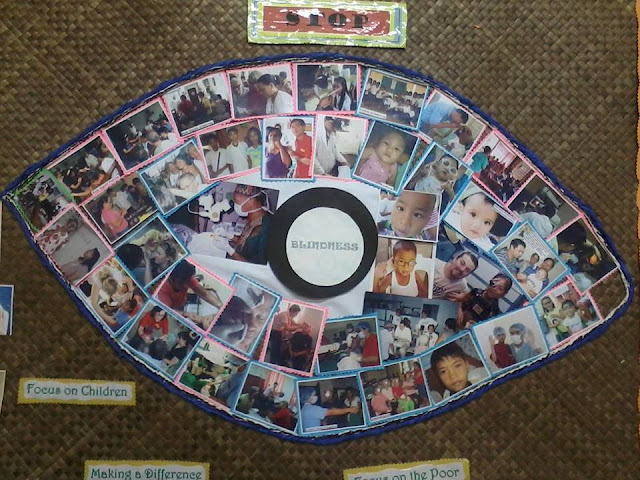The 3rd National Survey on Blindness in the Philippines of
2004 says prevalence of visual impairment among children (0 to 20 years old) is
0.43. Further quote: “Some random surveys showed increasing
dropout among students in public schools in the upper elementary grades and in
high school. This could be attributed to
eye problems particularly refractive errors and the high cost of optical
services by private optometrists that are not affordable by vast majority.”
Almost half of these cases are either treatable or preventable. The causes of childhood blindness in the
Philippines are:
- refractive errors
- cataract
- phthisis bulbi
- corneal opacity
- retinopathy
of prematurity
- optic atrophy
- amblyopia / others
- glaucoma and
- uveitis.
Among adults the leading cause is still
cataract.
Persons aged 0-19 years old are considered part of the pediatric age
group of the Philippines. Estimated
population of those below twenty years old (<20) for 2011 is 44,483,911.
Prevalence of blindness is 0.06% (26,690)
Prevalence of low vision is 0.09% (40,035)
Error of Refraction is 53% (21,218);
Cataract is 40.8% (16,334);
and all other blinding causes is 6.1% (2,442)
Total visual impairment is 0.15% = 66,725
"Gilbert and Foster in 1993 examined 256 children in schools for
the blind in Thailand (1 school) and the Philippines (3 schools). In the total
study, 15% of children were blind as a result of Retinopathy of Prematurity
(ROP)."
There are 1,573 ophthalmologists of which is 22 pediatric ophthalmologists in the
country and 95% of them are in Metro Manila (capital city of the country).
UNCORRECTED REFRACTIVE ERRORS
There is no reliable existing data for uncorrected refractive errors
especially among the adults but for children it is 53% of the low vision
prevalence.
Daniel Etyale on worldwide distribution of visual refractive error said:
"5-15% of children are considered to
have uncorrected refractive errors.
Although Vision 2020 (the current W.H.O. global initiative) imposes a
mandate to correct refractive errors, little infrastructure and few resources
are available to accomplish the task of correcting refractive errors. Etyale noted that while access to general
medical services is possible for about 25% of populations in developing
countries, access to medical eye care, including refraction, could be obtained
by only about 10 percent."
Quoting Etyale, given that at least 5% of the population has uncorrected refractive
errors that is equivalent to 2,224,195.
Although there are 10,226 optometrists in the country, uncorrected
refractive errors is still a leading cause of visual impairment in children and
adults as optical services is a highly competitive business and therefore
access to services is not affordable to the vast majority.
Prevalence of Blindness and Vision Impairments:
given that the current projected population for 2011 is 96 million with population growth rate of 2.04% annually;
|
Projected Population 2011
|
Bilateral Blindness (0.58%)
|
Cataract blind (0.62)
|
New cataract cases (incidence) every
year (0.20)
|
Low Vision and Error of Refraction
(2%)
|
Total vision impairment (2.58%)
|
|
96,000,000
|
556,800
|
345,216
|
69,043
|
1,920,000
|
2,476,800
|
